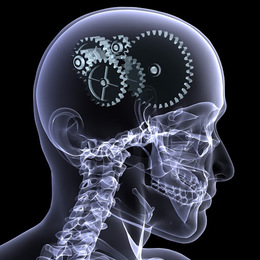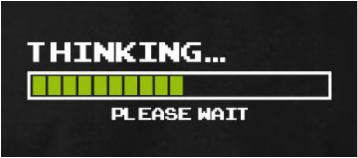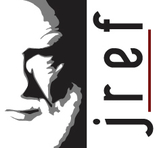
By Sharon Hill
This is the first in a series of essays examining the importance of applying active thought processes, some deeper thinking, to issues we face everyday. It is written for the parent, teacher or mentor to enforce the idea that learning how to think through situations and claims is a valuable skill for a more fulfilling life. Passively consuming information or swallowing whole what we are told can lead to errors and poor judgments that can cost us dearly.
Computed tomography (CT) is a type of imaging used to aid medical diagnoses. Special x-ray equipment is used to make cross-sectional pictures of your body. Doctors use CT scanning procedures to look for broken bones, tumors, blood clots, signs of heart disease and other problems that are not obvious on the surface but can seriously affect a person’s health. [1] The analogy of a body CT scan is appropriate when examining claims and information we get everyday in the media and our social spheres.
It’s easy to take a quick look at a conclusion, a news story, a status report, a recommendation, etc. and assume it’s on the up and up, that it is OK to accept at face value, and act accordingly without further contemplation. But some issues deserve a closer look, especially decisions that might affect your health, finances or the well-being of you and your family.
What if there is an important issue that you are asked to decide or vote on? Does it make sense to vote along your political party lines or choose based on what your neighbors and friends say is right? It make more sense to investigate the issue for yourself to decide what is best for your greater good.
So, indulge me in this analogy of a CT scan - critical thinking scan – to discuss why it’s important to take the extra time and effort to examine claims more deeply to see what could be concealed inside.
This is the first in a series of essays examining the importance of applying active thought processes, some deeper thinking, to issues we face everyday. It is written for the parent, teacher or mentor to enforce the idea that learning how to think through situations and claims is a valuable skill for a more fulfilling life. Passively consuming information or swallowing whole what we are told can lead to errors and poor judgments that can cost us dearly.
Computed tomography (CT) is a type of imaging used to aid medical diagnoses. Special x-ray equipment is used to make cross-sectional pictures of your body. Doctors use CT scanning procedures to look for broken bones, tumors, blood clots, signs of heart disease and other problems that are not obvious on the surface but can seriously affect a person’s health. [1] The analogy of a body CT scan is appropriate when examining claims and information we get everyday in the media and our social spheres.
It’s easy to take a quick look at a conclusion, a news story, a status report, a recommendation, etc. and assume it’s on the up and up, that it is OK to accept at face value, and act accordingly without further contemplation. But some issues deserve a closer look, especially decisions that might affect your health, finances or the well-being of you and your family.
What if there is an important issue that you are asked to decide or vote on? Does it make sense to vote along your political party lines or choose based on what your neighbors and friends say is right? It make more sense to investigate the issue for yourself to decide what is best for your greater good.
So, indulge me in this analogy of a CT scan - critical thinking scan – to discuss why it’s important to take the extra time and effort to examine claims more deeply to see what could be concealed inside.
Basic CT scan
We all “think” about stuff but critical thinking is a more advanced process. It takes effort and practice to do well. I was reminded of the value of critical thinking while recently reading Hoaxes, Myths and Manias by Bartholomew and Radford [2]. It’s subtitled “Why We Need Critical Thinking”. The book begins with the concept of critical thinking and how we really should be applying it to extraordinary claims – such as bizarre sighting reports (UFOs, fairies, phantoms, etc), Satanic ritual abuse, miracles, tabloid headlines, or whatever is in large print on the front page . The authors take their definition of critical thinking from Coon’s Psychology: A modular approach to mind and behavior [3]:
We all “think” about stuff but critical thinking is a more advanced process. It takes effort and practice to do well. I was reminded of the value of critical thinking while recently reading Hoaxes, Myths and Manias by Bartholomew and Radford [2]. It’s subtitled “Why We Need Critical Thinking”. The book begins with the concept of critical thinking and how we really should be applying it to extraordinary claims – such as bizarre sighting reports (UFOs, fairies, phantoms, etc), Satanic ritual abuse, miracles, tabloid headlines, or whatever is in large print on the front page . The authors take their definition of critical thinking from Coon’s Psychology: A modular approach to mind and behavior [3]:
Critical thinking is the ability to evaluate, compare, analyze, critique and synthesize information.
The basics of critical thinking starts with asking questions. I’ll return to this extremely important first step in a bit. Other aspects of CT include the following:
Defining the problem. Nothing derails understanding like not getting the important points clear from the beginning. What exactly is the issue at hand? This is the first task I undertake when faced with a new project or situation at work or home. Failure to define the problem will waste time and effort and lead to frustration.
Examining the evidence. Not all evidence is equal. What your neighbor tells you she saw is not of the same quality as a security camera recording of the same incident. Careful measurements taken with tools by an experienced investigator are more reliable than witness estimations. Consideration of the evidence will inform your conclusion.
Recognizing assumptions and biases. We all have belief preferences and make assumptions that may be unsubstantiated. The best we can do is acknowledge them but this is very hard to do. When listening to a political ad, is there bias? Of course, it drips with bias. Our own biases or those of someone we admire are much harder to spot. Some interpretations will exploit assumptions and biases.
Don’t fall for an emotional ploy. If a person making a claim doesn’t have much in terms of facts and logic, they may resort to tugging on your emotions – making you fearful, angry or sympathetic. Emotions will blind you to important details you should consider to get to the best evaluation of the situation. Watch when they try to sway your feelings and cloud your thinking. Watch out for cute animals, big promises and assertions to think about the children.
Avoid generalizations and oversimplification. So many people do this by giving into their prejudices and stereotypes and over or understating the problem. Not all scientists are socially inept; not all black people are violent, not all men are potential rapists, not all doctors are wealthy, not all pit bull dogs will attack you, you get the drift. Some people habitually think in simple black/white terms but nuance can be extremely important. Unfortunately, those nuances will make things very complicated. Social issues, especially, often have no simple means of conclusion.
Be open to various interpretations. This is true open-mindedness. It applies when you don’t give a bye to the paranormal or miracle explanation because the claimant hasn’t exhausted all the reasonable natural interpretations.
It’s OK to say “I don’t know”. Taking a position of temporary uncertainty is better than holding a mistaken position.
Questioning
I was never very good at asking questions because I often didn’t know the right thing to ask without feeling stupid. Learning how to ask questions is also a skill you get better at with experience. As I said, asking questions is the initial step in your CT scan. The point of questioning is to clarify understanding. Questions like, “What did you mean by that?” and “How do you know this?” are excellent in almost any situation to probe into the issue. It’s also a handy way of discussing the topic with someone who has come down on one side of the claim. For example, if you apply this basic questioning to a claim by your neighbor that another neighbor is engaging in some illegal activity, you can ferret out how good their evidence is or if they are just busybody gossips. Asking questions is a great way to keep the conversation moving where more can be revealed.
A particularly skilled process of questioning is “playing dumb”. This method can have a sneaky side purpose as well as gaining you some additional information. I advocate that those who do not believe in ghosts attend presentations by paranormal investigation groups and ask them questions. It’s often clear that their evidence is terribly weak and they misunderstand a lot but you are not going to do any good by causing a scene and attempting to debunk their claims. They will only cling more tightly to their guns and defend their position. But by questioning their assumptions and “facts”, you make them THINK about why they said what they said or concluded as they did. By making a point in the form of a question – “Did you happen to examine the furnace in the house to see if it makes that noise?” – at least gets them ruminating about their own ideas and makes you look pretty sharp.
As I writer, I will ask rhetorical questions to help the reader focus on some aspects that are important - "What evidence is presented here to support this claim?" "Does this person have the credentials does to make a medical statement?" "Whose image do you see in this wall stain?" (When you notice Frank Zappa instead of Jesus, it might burst the hopeful balloon of the faithful.)
Basic CT scanning skills are also part of a skeptical approach. Skepticism is more specific than critical thinking but broader than scientific thinking. Skepticism means applying the tools and findings of science but also information gained by other credible means – historical or linguistic research, perhaps – or through logic and consideration of probability.
CT scanning helps you peel back the layers, to find the important details underneath that can make or break a claim. You don’t always have to use it, of course. (Mind your manners; don’t be the one asking endless probing questions at the dinner party.) Just use it when it’s important that you make the best assessment you can about a claim, decision or situation.
Defining the problem. Nothing derails understanding like not getting the important points clear from the beginning. What exactly is the issue at hand? This is the first task I undertake when faced with a new project or situation at work or home. Failure to define the problem will waste time and effort and lead to frustration.
Examining the evidence. Not all evidence is equal. What your neighbor tells you she saw is not of the same quality as a security camera recording of the same incident. Careful measurements taken with tools by an experienced investigator are more reliable than witness estimations. Consideration of the evidence will inform your conclusion.
Recognizing assumptions and biases. We all have belief preferences and make assumptions that may be unsubstantiated. The best we can do is acknowledge them but this is very hard to do. When listening to a political ad, is there bias? Of course, it drips with bias. Our own biases or those of someone we admire are much harder to spot. Some interpretations will exploit assumptions and biases.
Don’t fall for an emotional ploy. If a person making a claim doesn’t have much in terms of facts and logic, they may resort to tugging on your emotions – making you fearful, angry or sympathetic. Emotions will blind you to important details you should consider to get to the best evaluation of the situation. Watch when they try to sway your feelings and cloud your thinking. Watch out for cute animals, big promises and assertions to think about the children.
Avoid generalizations and oversimplification. So many people do this by giving into their prejudices and stereotypes and over or understating the problem. Not all scientists are socially inept; not all black people are violent, not all men are potential rapists, not all doctors are wealthy, not all pit bull dogs will attack you, you get the drift. Some people habitually think in simple black/white terms but nuance can be extremely important. Unfortunately, those nuances will make things very complicated. Social issues, especially, often have no simple means of conclusion.
Be open to various interpretations. This is true open-mindedness. It applies when you don’t give a bye to the paranormal or miracle explanation because the claimant hasn’t exhausted all the reasonable natural interpretations.
It’s OK to say “I don’t know”. Taking a position of temporary uncertainty is better than holding a mistaken position.
Questioning
I was never very good at asking questions because I often didn’t know the right thing to ask without feeling stupid. Learning how to ask questions is also a skill you get better at with experience. As I said, asking questions is the initial step in your CT scan. The point of questioning is to clarify understanding. Questions like, “What did you mean by that?” and “How do you know this?” are excellent in almost any situation to probe into the issue. It’s also a handy way of discussing the topic with someone who has come down on one side of the claim. For example, if you apply this basic questioning to a claim by your neighbor that another neighbor is engaging in some illegal activity, you can ferret out how good their evidence is or if they are just busybody gossips. Asking questions is a great way to keep the conversation moving where more can be revealed.
A particularly skilled process of questioning is “playing dumb”. This method can have a sneaky side purpose as well as gaining you some additional information. I advocate that those who do not believe in ghosts attend presentations by paranormal investigation groups and ask them questions. It’s often clear that their evidence is terribly weak and they misunderstand a lot but you are not going to do any good by causing a scene and attempting to debunk their claims. They will only cling more tightly to their guns and defend their position. But by questioning their assumptions and “facts”, you make them THINK about why they said what they said or concluded as they did. By making a point in the form of a question – “Did you happen to examine the furnace in the house to see if it makes that noise?” – at least gets them ruminating about their own ideas and makes you look pretty sharp.
As I writer, I will ask rhetorical questions to help the reader focus on some aspects that are important - "What evidence is presented here to support this claim?" "Does this person have the credentials does to make a medical statement?" "Whose image do you see in this wall stain?" (When you notice Frank Zappa instead of Jesus, it might burst the hopeful balloon of the faithful.)
Basic CT scanning skills are also part of a skeptical approach. Skepticism is more specific than critical thinking but broader than scientific thinking. Skepticism means applying the tools and findings of science but also information gained by other credible means – historical or linguistic research, perhaps – or through logic and consideration of probability.
CT scanning helps you peel back the layers, to find the important details underneath that can make or break a claim. You don’t always have to use it, of course. (Mind your manners; don’t be the one asking endless probing questions at the dinner party.) Just use it when it’s important that you make the best assessment you can about a claim, decision or situation.
Notes
- http://www.nlm.nih.gov/medlineplus/ctscans.html
- Bartholomew. Robert E. and Benjamin Radford. 2003. Hoaxes, Myths and Manias: Why We Need Critical Thinking, Prometheus Books. This book contains a series of illustrative examples of why we should not blindly accept what the media sells us as true. It was my inspiration and reference for this piece and may be again for future pieces. I recommend it for your bookshelf.
- Ibid., P. 14.
Sharon Hill, P.G., EdM, is a geologist with a specialty in science and society and public outreach for science. She is the creator and editor of the unique critical thinking blog DoubtfulNews.com and researches, writes and speaks about the paranormal, monsters and natural phenomena for various publications including Skeptical Inquirer and Fortean Times. Follow her on Twitter @idoubtit.


